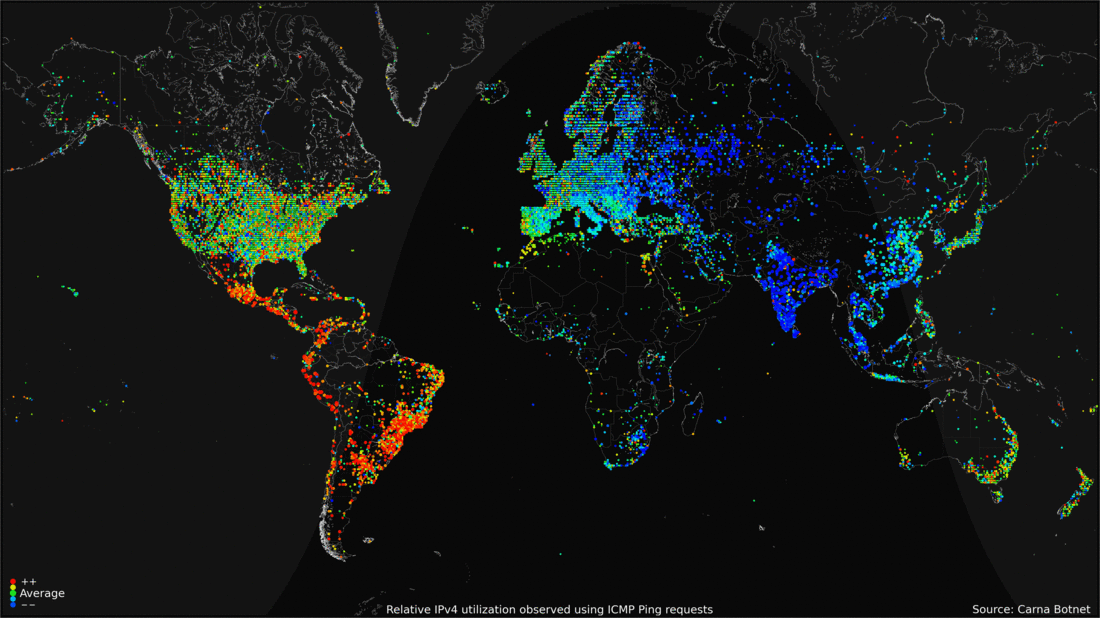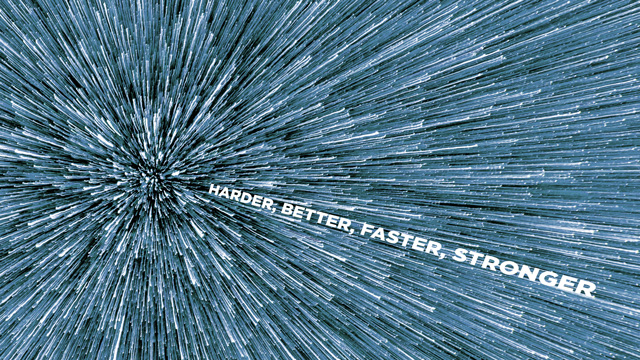While you weren’t looking, the internet got super fast. I’m not talking Google Fiber fast. I’m talking Star Trek fast. Today, it’s not just possible to download a movie in seconds. New technology makes it easy to download dozens of movies in fractions of a second. Fast is almost too slow a word to describe such speed.
Following are just a few of the exciting discoveries from the past six months that stand to fundamentally change the way that we connect. The future moves at lightning speed — assuming we let it get there.
Lasers
Like all wonderful things, the future of ultra-fast internet hinges on lasers. Fibre optic cables transmit data on waves of light (read: lasers), and as laser technology improves, data transfer speeds get faster. Researchers at CalTech, for instance, just announced a new type of laser with exceptionally high spectral purity. That means that the laser is closer than ever to operating on a single frequency, and since light with a higher spectral purity can carry more data, this new laser will offer faster connection speeds.
How much faster? That’s so far unclear. It’ll have a hard time competing with another recent invention from CalTech’s neighbours to the north. Scientists at the Stanford Linear Accelerator Center (SLAC) are perfecting laser technology that adds a third dimension to data transmission. Current fibre optic technology only operates on two dimensions, but by adding a twist and introducing a third dimension, they’re able to eclipse existing connection speeds. Last year, a team from Boston University used a similar method to achieve speeds as high as 1.6 terabits per second. Compare that to Google Fiber, which while faster than the vast majority of connections in America is still only 1 gigabit per second.
Microchips
Finding ways to make information travel faster through the tubes is just part of the battle. Crazy laser technology only yields high speeds if the machines on either end of the connection can handle them. Thanks to another very recent breakthrough, we now have a chip that can accommodate mind-bending amounts of data.

The chip comes from the fine minds at IBM, and it’s terrifically tiny but profoundly powerful. More specifically, it’s an analogue-to-digital converter (ADC) that will enable faster and more complex digital equalization across long distance fibre channels. How much faster? Again, Google Fiber clocks in at 1 gigabit per second. This new IBM chip enables connections as fast as 400 gigabits per second. That’s about 5000 times faster than the average connection in the United States.
Protocols
Another aspect of internet speed people don’t often think about is the rules that govern how data is exchanged between computers. In a word: protocol. Optimising these rules can yield faster connections without expensive chores like replacing hardware or improving infrastructure. Like, a lot faster.
The best example in recent history is the new Flexigrid protocol. Whereas current connections tend to travel through the cable all by its lonesome, Flexigrid lays multiple signals over each other in a single cable. That means that data races towards its destination on parallel planes, allowing for exponentially faster transfer points. At risk of wearing out the question, you ask: How much faster? One recent test in the United Kingdom sent seven 200 gigabit signals on one “Alien Super Channel” and reached speeds as high as 1.4 terabits per second. At speeds like that, you can download all the movies pretty much instantly.
Advances aren’t just limited to those with fibre at their disposal; they extend to the large part of the world still dependent on copper phone lines. Under the current protocol standard, VDSL, their connections are limited to just over 100 megabits per second. Slow! But a new protocol called G.fast allows for high-speed DSL — like, 1 gigabit per second style high speed — through existing copper line. Unfortunately, it might interfere with the FM radio spectrum, but who listens to the radio any more anyways?
Servers (or Lack Thereof)
The piece of hardware needed to make the internet work that I haven’t mentioned so far is server technology. After all, the internet lives on servers! So if we can improve servers, we can improve how the internet works.

But what if we didn’t improve servers and just got rid of them instead? A new European Union-backed project called PURSUIT wants to do just that. Instead of relying on static servers to store all of the internet’s data, backers of this project want to figure out a way to distribute that load across all computers on a given network. Think of it as peer-to-peer sharing, on an internet-wide scale.
This would involve doing away with the idea of URLs (Uniform Resource Locators) in favour of so-called URIs (Uniform Resource Identifiers) to find data. That data would live in many different locations instead of just one, which would improve speed, efficiency, and reliability. Inevitably, that means not having a central server that could go down in the event of an attack or massive data load.
Politics (or Excess Thereof)
Here comes the bummer. While most of these advances already exist — even if just in a lab — and make insanely fast internet a reality, the chances that you’ll get to enjoy them any time soon are slim. As last week’s news of the impending acquisition of Time Warner Cable by Comcast shows, America suffers from a severe lack of competition in the broadband business.
Long story short, a large number of folks don’t have much choice of who delivers their broadband to them. Some have no choice at all. Thankfully, that may soon change in the 34 US cities, where Google hopes to expand Fiber coverage. The reasons this monopolistic nightmare is allowed to exist are complicated, and the ever-revolving door between big telecom and government agencies responsible for regulating this space, doesn’t help.
There is hope though. As Andy Kessler argued in a Wall Street Journal opinion piece this week, all it would take the get the good ol’ US of A. back up to speed (and beyond) is a little bit of old-fashioned capitalism:
New rules aren’t the solution. With real competition, you get net-neutrality for free. If one operator in your town makes Netflix pay to guarantee its movies stream smoothly, as Comcast announced Sunday it will begin doing, that opens up a market for the next operator to do it for less, or free.
But new rules would help. So as we look to take another swing at net neutrality, pay attention. Heck, call your MP. The lightning-fast future of the internet is on the line.
